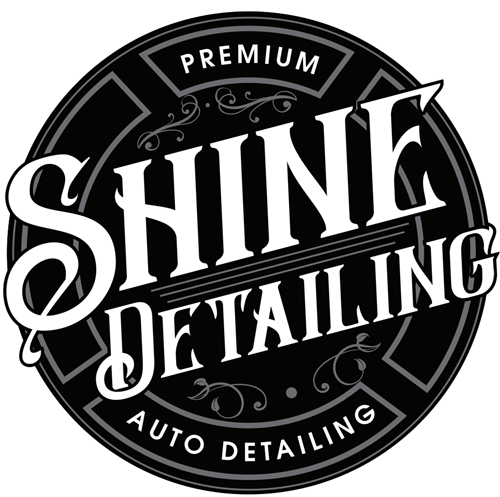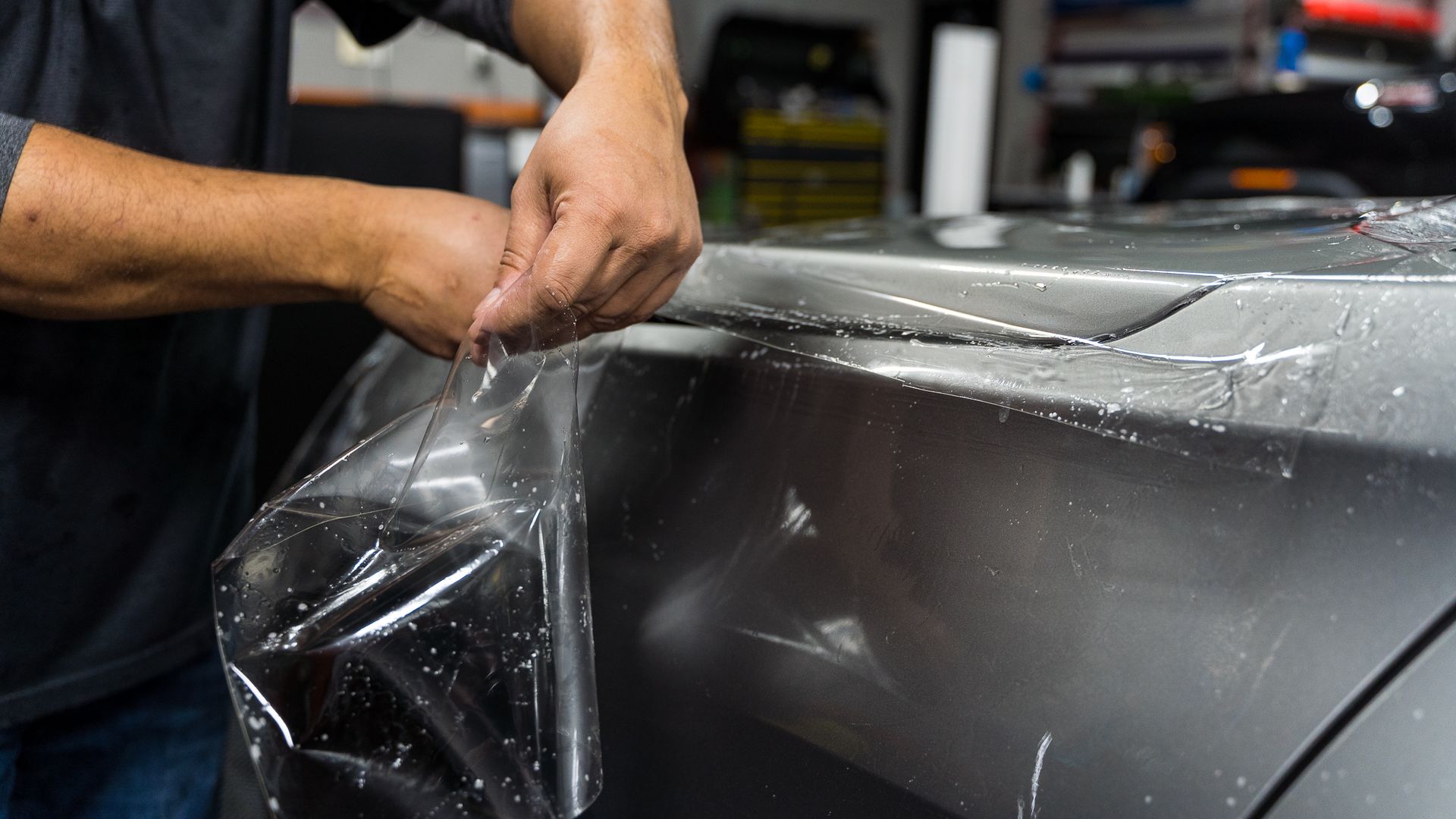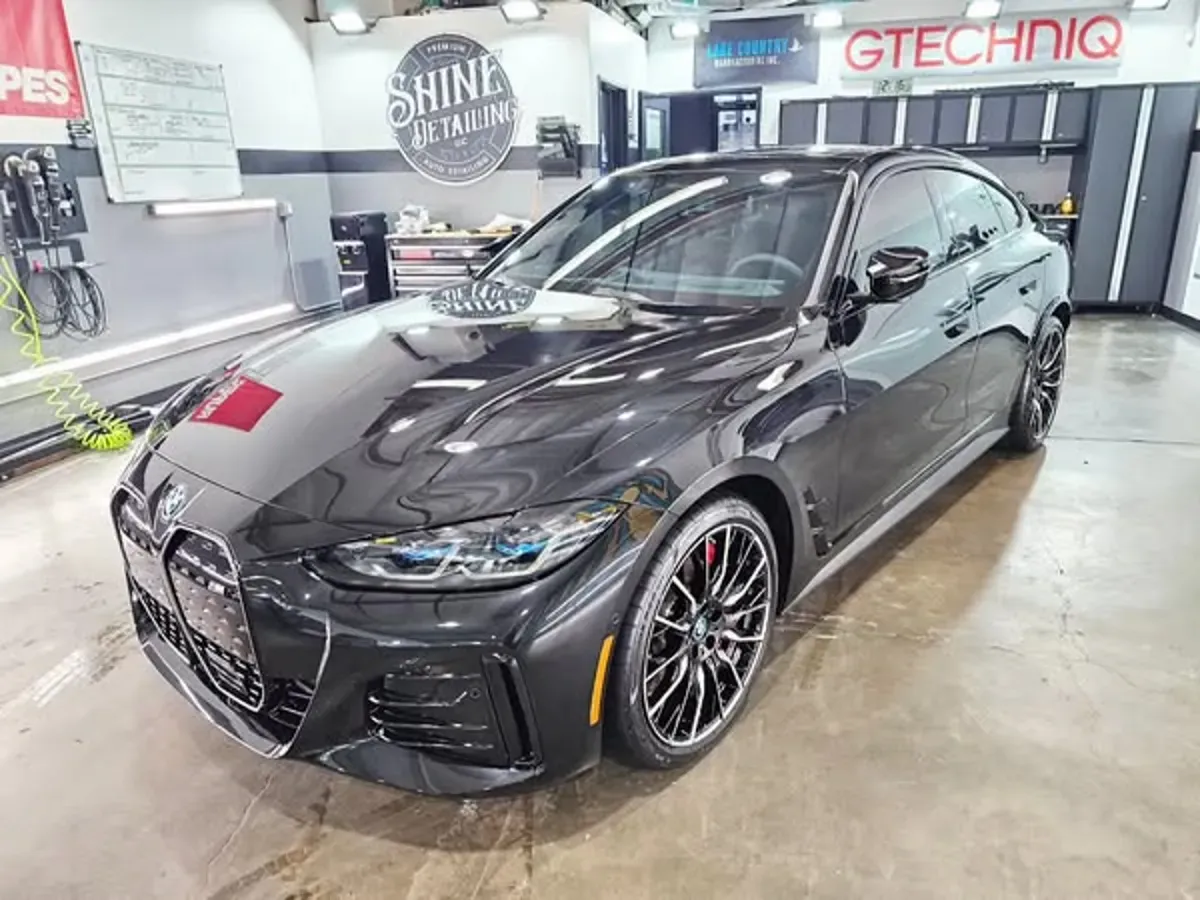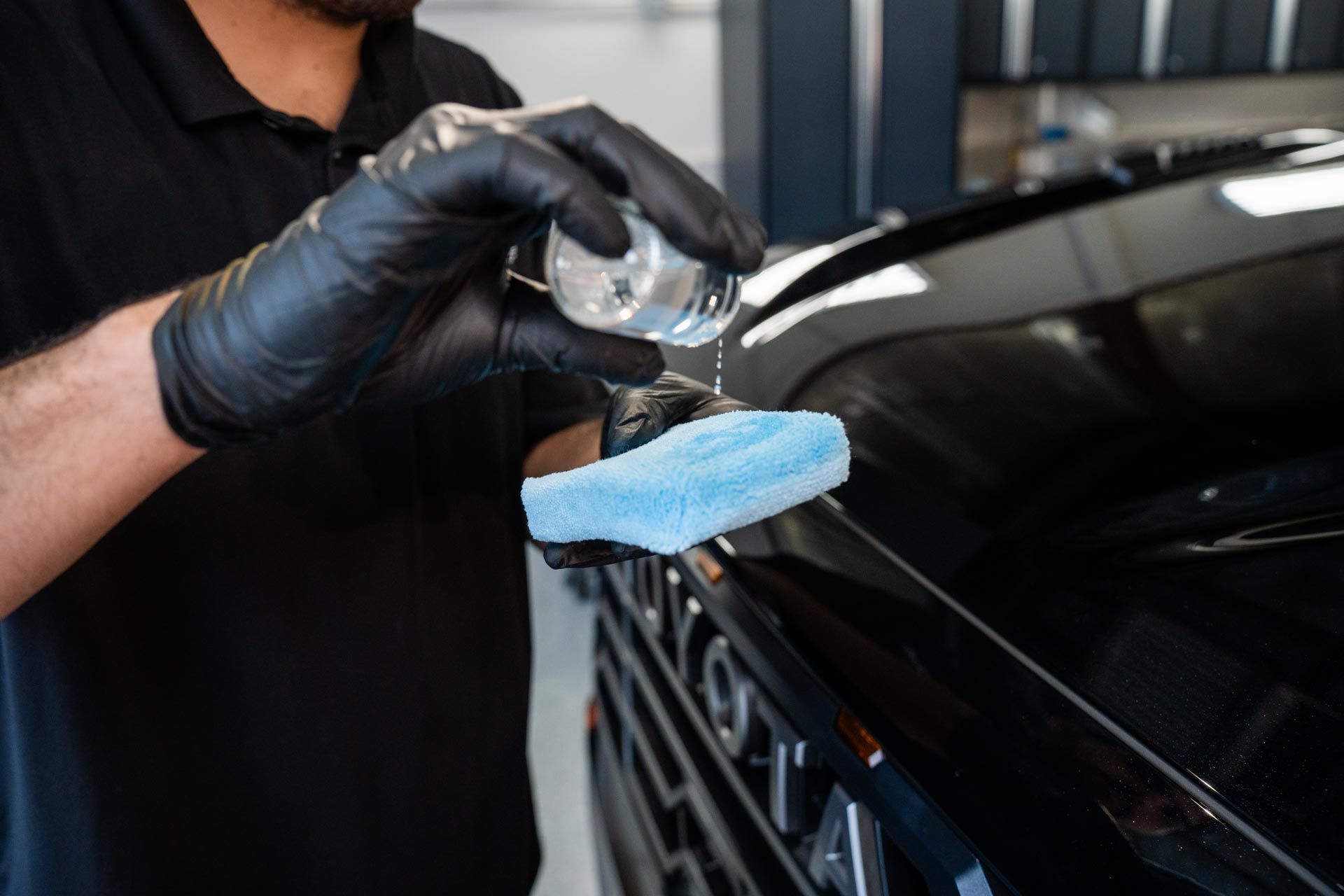A Beginner’s Guide to Car Window Tinting: Tips, Techniques, and How to Get Started
CALL NOW (714) 514-5956
Tinting your car windows can do more than just make your ride look sleek. It offers protection from harmful UV rays, reduces heat inside your car, and even cuts down glare from outside lights. As someone who enjoys tackling projects yourself, understanding these benefits might push you towards taking this up as your next DIY endeavor.
We’ve made sure this guide gives you step-by-step instructions without overwhelming technical jargon. From choosing the perfect tint that won't interfere with your gadgets to understanding what tools you'll need, we've got you covered. You'll see how each type of tint serves different needs, making it easier for you to decide which one suits your style and functionality better.
Types of Window Tinting
When it comes to
window tinting, the myriad of options can be overwhelming. From ceramic and carbon to metallic, dyed, and hybrid tints, each type has its own set of features and advantages to offer. Let's take a closer look at each type to help you make an informed decision when choosing the right window tint for your vehicle.
Ceramic Tint
Ceramic tint is often considered a top-tier option due to its exceptional UV and heat rejection capabilities. What sets it apart is its ability to block out a higher percentage of infrared and UV rays without compromising visibility. Unlike traditional dyed films, ceramic tints do not contain any metals, preventing any interference with electronic signals such as GPS or cell phone reception. While ceramic tints are offered at a higher price point, their superior performance and color stability make them a valuable investment for those seeking long-term protection for their vehicle's interior.
Key Features:
- High UV and heat rejection
- No interference with electronic signals
- Premium price point
Carbon Tint
Carbon tint is known for its sleek matte finish and outstanding UV-blocking properties. It effectively absorbs heat while providing a non-reflective appearance that enhances the aesthetics of the vehicle. Unlike dyed films, carbon-based tints don't fade over time, maintaining their original shade for years. The advantages of carbon tints make them a popular choice among car owners who prioritize both functionality and visual appeal. Furthermore, their ability to maintain a comfortable temperature within the vehicle contributes to an overall enjoyable driving experience.
Key Features:
- Matte finish
- Excellent UV and heat-blocking
- Fade-resistant
Metallic Tint
Renowned for its shiny appearance and superior heat-rejecting properties, metallic window tint offers exceptional UV protection while reducing solar glare. However, it's important to note that the metal content in these tints may interfere with GPS and cell phone signals. Despite this potential drawback, metallic tints remain a sought-after option for those seeking maximum solar energy rejection.
Key Features:
- Shiny finish
- Excellent heat and UV protection
- Potential interference with electronic signals
Dyed Tint
Dyed tints represent an affordable entry into the world of window tinting, providing basic heat and UV protection without breaking the bank. However, one downside to dyed films is their tendency to fade over time due to prolonged exposure to sunlight. While they may not offer the same level of performance as premium options, dyed tints still serve as an effective solution for protecting vehicle interiors from harmful UV rays.
Key Features:
- Affordable
- Basic heat and UV protection
- Fading over time
In delving into each type of window tinting, it becomes evident that there are numerous factors to consider when selecting the most suitable option for your vehicle. Whether it's prioritizing heat rejection, UV protection, electronic signal compatibility, or visual aesthetics, understanding the unique characteristics of each type is essential in making an informed decision.
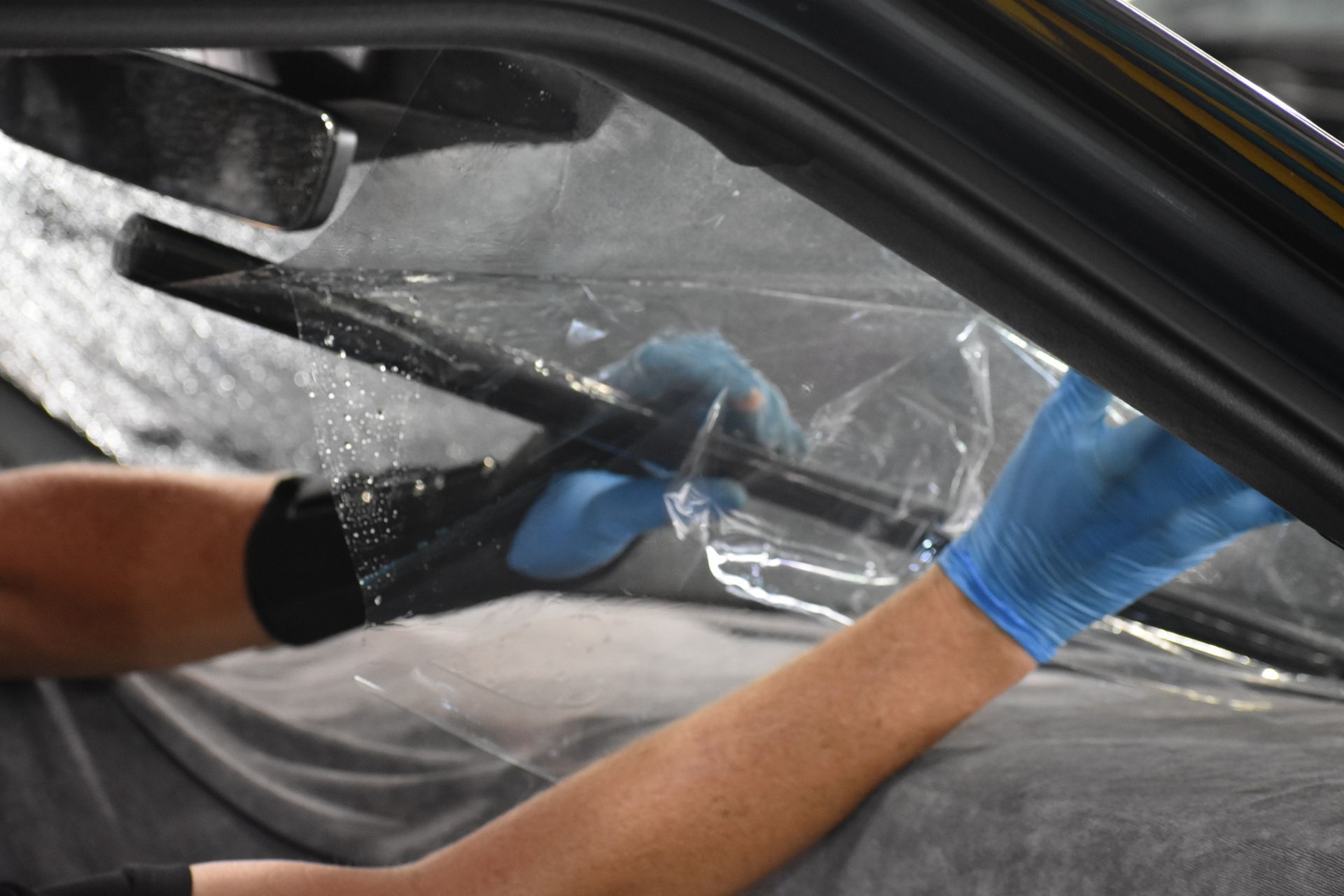
Benefits of Tinting Your Windows
When considering window tinting for your vehicle, you're not merely adding a layer of film to your windows; you're investing in a range of benefits that extend beyond aesthetics. Let's explore some of the key advantages that make window tinting a valuable addition to any vehicle.
UV Protection
The sun's ultraviolet (UV) rays can be harmful, not only to your skin but also to the interior of your vehicle. Window tinting effectively blocks up to 99% of these harmful UV rays, serving as a protective shield for both the car's occupants and the interior materials. It acts as a powerful barrier against the sun’s damage, shielding your car's upholstery and dashboard from premature aging, fading, and cracking.
Heat Rejection
Stepping into a hot car on a scorching day can be an uncomfortable experience for anyone. High-quality tints are capable of reducing the cabin temperature by up to 60%, ensuring a more pleasant and cool driving experience, particularly during the sweltering summer months.
Glare Reduction
Glare from the sun, headlights, and reflective surfaces can significantly impede driving visibility and comfort. By having your windows tinted, you can effectively reduce these sources of glare and enhance overall driving safety. It’s particularly helpful when trying to navigate through bright sunlight or headlight reflections during nighttime drives.
Privacy and Security
Tinted windows offer more than just aesthetic appeal; they also provide an added layer of privacy and security by making it harder to see inside the vehicle from the outside. This helps protect your personal belongings from prying eyes and serves as a deterrent against potential thieves.
Aesthetic Appeal
Beyond its functional benefits, window tinting can elevate the overall appearance of your car. The sleek, stylish appearance that tinted windows impart adds sophistication to any vehicle, enhancing its visual appeal and making it stand out from the crowd. It's an instant upgrade that can transform the look and feel of your car.
With these compelling advantages in mind, window tinting emerges as a multifaceted enhancement for your vehicle, offering improved protection, comfort, privacy, security, and style—all wrapped into one smart investment.
Legal Considerations and Regulations
Tinting your car windows can bring great advantages, but there are rules to follow. Each state has its own regulations about window tinting to ensure it's done safely and doesn't pose a risk to drivers or law enforcement officers. Let's go over the important aspects of these regulations to help you navigate the process more confidently.
State-Specific Regulations
Every state has its own rules when it comes to window tinting. The darkness of the tint film allowed on vehicles can vary widely from state to state. It's crucial to check your state's Department of Motor Vehicles (DMV) website or contact them directly for accurate information. This will help you comply with the specific legal requirements in your area.
Visible Light Transmission (VLT)
One crucial aspect of tint regulations is VLT, which stands for Visible Light Transmission. VLT refers to the percentage of light allowed to pass through your windows. For instance, California permits a minimum 70% VLT on the front side windows while allowing different percentages for rear and back windows. Understanding VLT requirements is essential; it affects visibility and safety by determining how much light passes through your vehicle's windows.
Medical Exemptions
Some states provide medical exemptions for individuals requiring darker tints due to health conditions such as light sensitivity, skin conditions, or eye problems. If you have a medical condition that requires darker window tints, you may be eligible for an exemption from the standard tint regulations in your state. These exemptions typically require a doctor's recommendation or prescription.
Penalties
Understanding the repercussions of violating tint laws is essential. Penalties for non-compliance can range from fines and vehicle inspection failures to mandated removal of the tint film altogether. Familiarizing yourself with these regulations ensures compliance with local laws and enables you to enjoy the benefits of window tinting without unnecessary stress or legal complications.
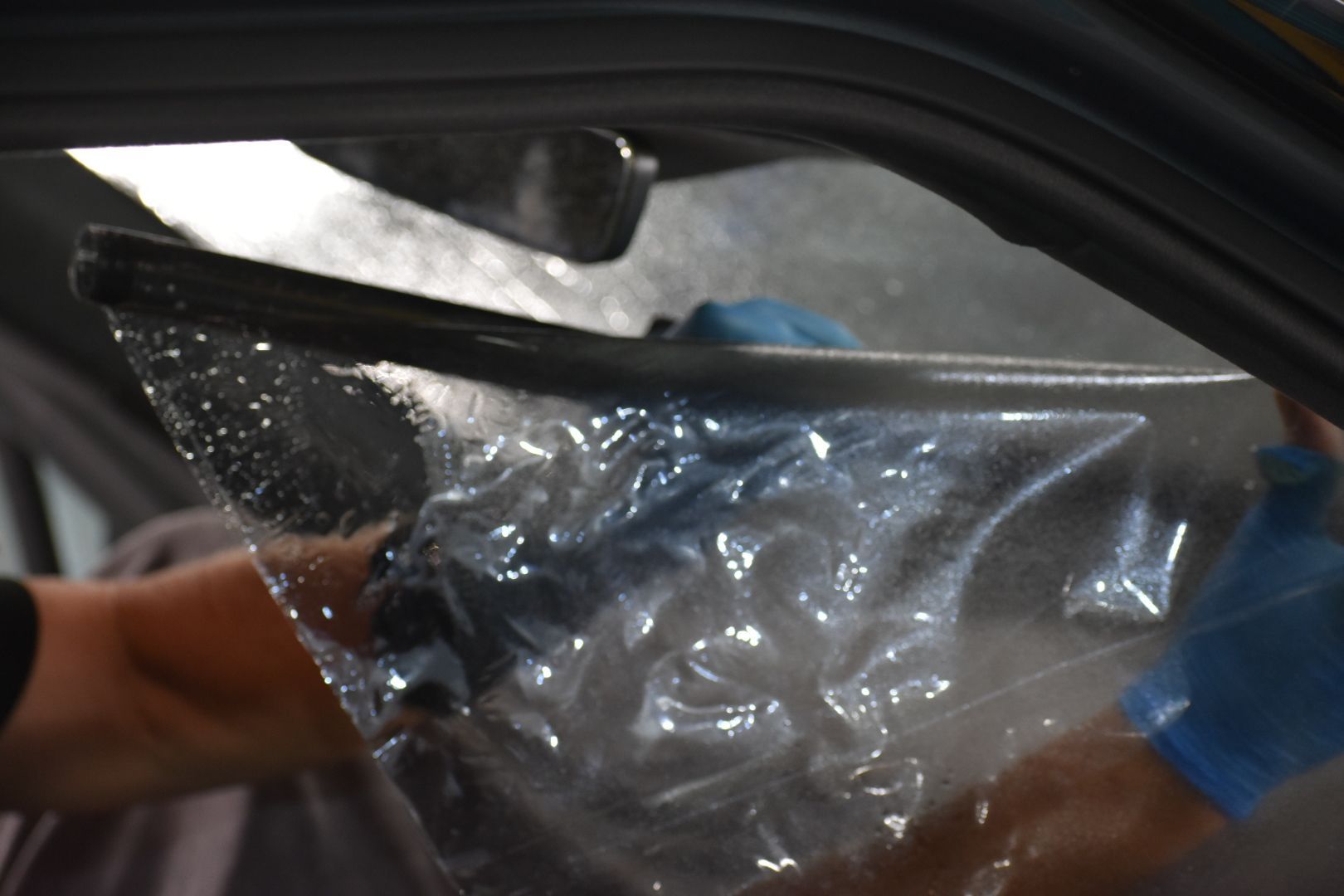
Step-by-Step Tinting Process
Tinting your windows can be a great way to transform the look and feel of your vehicle while providing practical benefits. The process, when done right, enhances privacy, protects against UV rays, and adds a sleek aesthetic appeal. Let's break down the essential steps for applying window tint like a pro.
Step I: Clean the Windows
Before diving into the application of the tint film, you first need to ensure a pristine surface. Thoroughly cleaning the windows is crucial to remove any dirt, dust, and oils that could compromise the tint's adhesion. Start by using a mild soap solution and a microfiber cloth to scrub the windows inside out. Pay special attention to the edges where contaminants often accumulate. A final wipe with a lint-free cloth eliminates any remaining debris before you proceed.
Step II: Cut the Tint Film
The next step involves measuring and cutting the tint film to match the size and shape of your windows perfectly. Precision plays a pivotal role here, as inaccuracies could lead to unsightly gaps or overlaps, impacting both functionality and aesthetics. Utilize a sharp blade and a clean cutting surface to achieve clean, even lines while ensuring that the film fits snugly within each window pane.
Step III: Apply the Film
With your custom-cut film in hand, it's time to apply it to the window surface. Begin by peeling off the backing layer and carefully aligning the film on the inside of the window. Smooth out any air bubbles or wrinkles using a squeegee, starting from the center and working towards the edges. This meticulous approach guarantees a seamless, bubble-free finish that not only looks professional but also maximizes tint longevity.
Step IV: Trim Excess Film
After ensuring an even application of the tint film, take care to trim any excess material along the edges for a precise fit. A sharp blade or precision knife is invaluable here, allowing you to achieve neat, straight edges that blend seamlessly with your vehicle's design. This extra attention to detail contributes significantly to a polished final result.
Step V: Allow to Cure
Finally, once the film is in place and trimmed to perfection, exercise patience by allowing it time to cure effectively. Curing is vital as it allows the adhesive to bond securely with the glass surface. To accomplish this, refrain from rolling down the windows for at least 48 hours after tint application—this ensures that the tint adheres uniformly and eliminates any risk of premature peeling or shifting.
By following these step-by-step guidelines with precision and care, you can elevate your vehicle's aesthetics while reaping the practical benefits of quality window tint application.
Common Mistakes to Avoid
Window tinting can be tricky for beginners, and there are several common mistakes that many people make when they try it for the first time. Understanding these mistakes is essential so that you can avoid them and achieve the best results possible.
Improper Cleaning
One of the most common mistakes is failing to clean the windows thoroughly before applying the film. If there's dirt or debris on the window, it can get trapped under the film, leading to bubbles and poor adhesion. To avoid this, make sure to clean the windows meticulously and use a lint-free cloth to remove any traces of dust or particles. This will ensure a smooth and flawless finish without any imperfections caused by trapped debris.
Incorrect Film Application
Another mistake to watch out for is applying the film without using enough water. Without sufficient water, the film may not adhere properly, resulting in an uneven finish with air pockets or creases. To avoid this, use a solution of water and a few drops of mild soap to wet both the window and the film. This will allow you to slide and position the film correctly before it dries, ensuring a seamless application without any air bubbles.
Cutting Inaccuracies
Cutting the film inaccurately is another common mistake that can lead to improperly fitting pieces, which may peel off sooner. To prevent this, take your time when cutting the film to ensure precise measurements and clean, straight lines. Using a sharp blade and a steady hand will help you achieve accurate cuts, resulting in perfectly fitted pieces that adhere well and stand the test of time.
By carefully measuring and cutting your tint film, you can ensure that it fits your windows perfectly, avoiding any unsightly gaps or uneven edges that could lead to peeling.
Choosing a Professional Tint Shop
When it comes to window tinting, the quality of the work relies on the expertise of the technicians and the materials used. Here are some critical considerations when choosing a professional tint shop for your window tinting needs.
Look for Certifications
Select a shop with certified and experienced technicians to ensure exceptional service. Certifications reflect a commitment to professionalism and skill development. Inquiring about certifications such as those provided by the International Window Film Association (IWFA) or manufacturer-specific accreditations can indicate a high level of expertise.
Check Reviews
Before selecting a tint shop, take time to read online reviews and seek recommendations from friends, family, or colleagues who have had their windows tinted. By doing so, you can gain insight into the reputation of different tint shops in your area and understand the quality of work, customer service, and overall satisfaction with the tinting services provided.
Inquire About Products
When choosing a professional tint shop, ensure that they use top-of-the-line window tints with warranties. At Shine Detailing, we offer premium-grade tints that ensure durability and customer satisfaction. Inquiring about the type and quality of materials being used is crucial for ensuring that you receive long-lasting results.
Warranty and Aftercare
Opt for tint shops that offer warranties on both the film and installation. A comprehensive warranty assures that any issues or concerns regarding the quality of installation or performance of the film will be resolved professionally. Additionally, inquire about aftercare guidelines to maintain the longevity of the window tint and preserve its visual appeal over time.
By considering these factors when selecting a professional tint shop, you can ensure that your window tinting experience is seamless and delivers exceptional results.
For expert advice and impeccable window tinting services, contact us at Shine Detailing at (714) 514-5956!
about us
Located in the scenic city of Yorba Linda, CA, Shine Detailing, an esteemed member of the International Detailing Association (IDA) since 2018, stands as a testament to superior vehicle detailing services. Founded in 2013 by a vehicle enthusiast, Kelly Johnson, with an enduring passion for vehicle detailing traced back to their childhood. Shine Detailing is dedicated to providing a comprehensive array of services, including ceramic coating, paint correction, paint protection film, window tint, and detailing. Harnessing the skills of experienced technicians and high-quality products, the company ensures absolute care and attention to all types of vehicles. A firm believer in the mantra, Never Too Dull To Shine, Shine Detailing is the go-to company to transform any vehicle into a radiant reflection of its owner.
OUR LOCATION
22343 La Palma Ave, Suite 110
Yorba Linda, California, 92887
United States
SOCIAL MEDIA



Trained Specialist
HOURS OF OPERATION
Monday- Friday
5:00 a.m. - 4:00 p.m.
Saturday & Sunday
CLOSED
CONTACT US
PHONE: (714) 514-5956
EMAIL: info@shinedetailingllc.com
Shine Detailing was designed by the team at Detailers Roadmap, a platform developed for detailing operators across the globe.
All Rights Reserved | 8bitcreative, LLC | SHINE DETAILING
